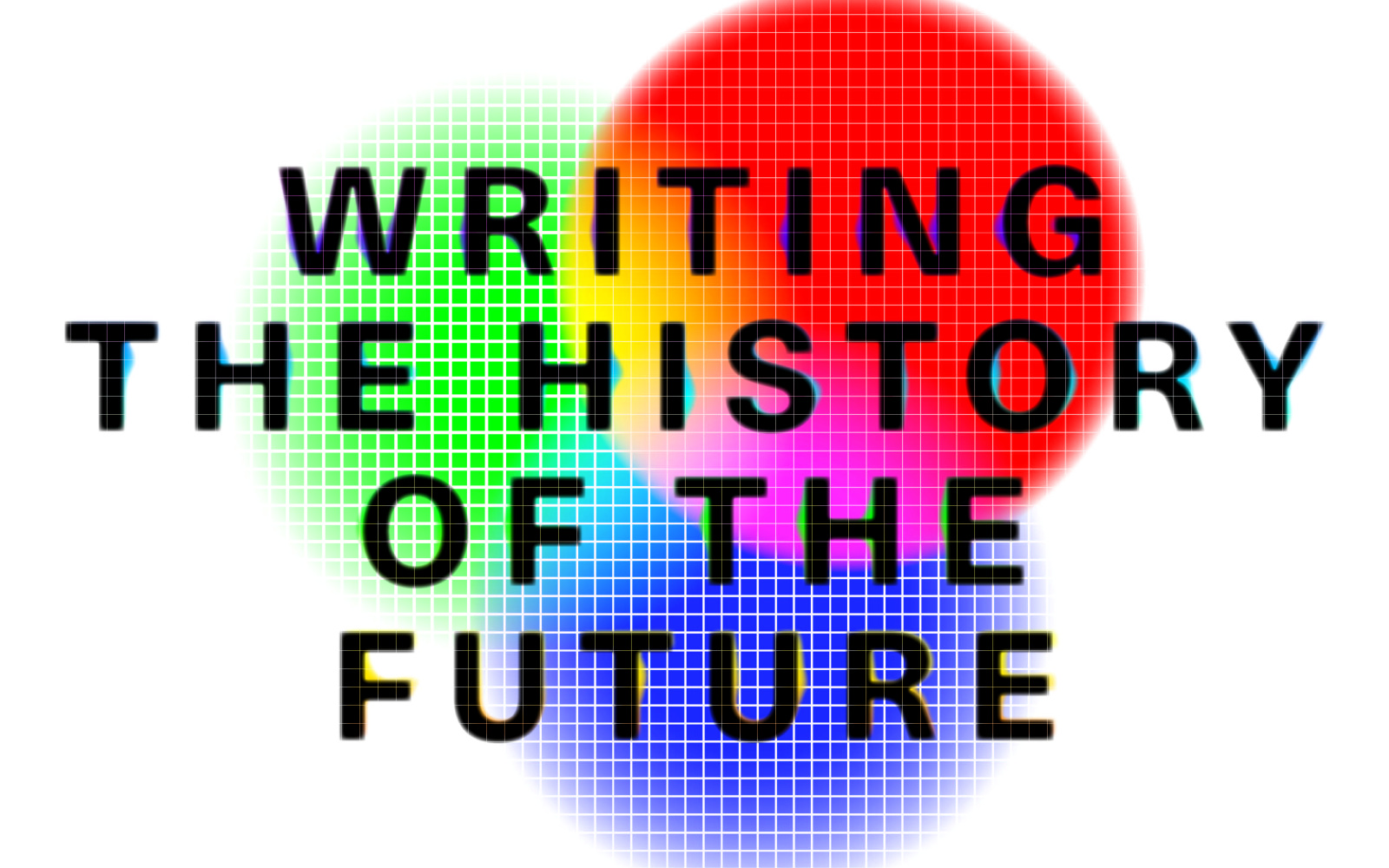- Exhibition
Writing the History of the Future
The ZKM Collection
Sat, February 23, 2019 – Sun, January 09, 2022
- Location
- Atrium 8+9, 1st floor
- Entrance fee
- Museum Admission
In an extraordinary compilation, ZKM presents the main works from its globally unique media art collection.
In the twentieth century technical media radically transformed the image. Beginning with the scandalous medium of photography, in which images seemingly generated themselves, media »transformed the entire nature of art« (Walter Benjamin). Photography, film, phonography, radio, television, video, computers, and the Internet have redefined the relationship between artist, work, and viewer as well as our notion of the creative act. The exhibition Writing the History of the Future exemplifies the transformation of art due to the changing technologies of production, reception, and distribution. It also shows how artists anticipate media and social practices that will only become self-evident for society in general years later. As the title of the exhibition says, they write the history of the future.
A New History of Art
The 30th anniversary of the ZKM | Karlsruhe is the occasion to retell the history of art in the 20th and 21st centuries with its collection, which is considered one of the most important media art collections in the world. With more than 500 objects, the exhibition shows the diversity of the arts in the media change. It includes photography, graphics, painting and sculpture as well as computer-based works, film, holography, kinetic art, op-art, sound art, visual poetry and video art.
Through its perspective that spans all genres and media, Writing the History of the Future opens up a new perspective on the art of the twentieth and twenty-first centuries in an exhibition space measuring over 6,000 m2. This era of rapid technological change brought about by electronic and digital information and communication technologies initiated an unprecedented democratization of art and culture. Writing the History of the Future explores how photography’s fulfilled promise to individualize visual representations of the world was fulfilled again by the activists of video art in the 1960s. With the sudden availability of video technology, the activists depicted realities that at the time were not shown on television or by the film industry, and they developed an aesthetic that still influences our visual culture today. The expansion of technical visual media, from the panel painting to the screen, dispersed art in a new visual culture, intertwining mass culture and high culture. With the spread of computer technology in the 1950s, our notion of the creative act changed and the automation and algorithmization of the arts began. This apparatus that processed code provoked debate rather like today’s discussions about artificial intelligence. Electronic media also changed how sound was produced and perceived in the twentieth century. Sounds and noise that were previously unacceptables became a medium of fine art, of Sound Art.
The Empowerment of the Viewer: The Route to Participatory Arts
The exhibition Writing the History of the Future evidences how fundamentally devices have changed the relationship to the artwork – both in terms of production and perception. The production of art no longer focuses solely on the artist as subject, but now includes various actors, be they devices or people. Through the development of participative, interactive, and performative arts, from moving images to moving beholders, since the 1960s open works have been created that invite exhibition visitors not only to look, but also to act.
The presentation of the ZKM collection, which represents a selection from over 9,500 works, is distinguished by its cross-genre staging. It shows the transformation of the genre portrait, the representation of the body, landscape, and architecture from painting to interactive computer installation. It shows the updating of the ancient medium of writing under the conditions of information technology as well as of art as a format for collective and individual memory. Thus the exhibition presents art that is radically contemporaneous – art in which artists reflect on the present using the technical media of their time. It offers a unique opportunity to gain a comprehensive overview of the actual development of art in the twentieth century beyond painting and sculpture, with various larger and smaller scale installations as well as numerous incunabula of media art.
The Exhibition as a Space for Experience and Thoughts
Writing the History of the Future is not only a collection of objects, it is also an assembly of subjects. Lounges invite you to sit down and talk about what you’ve seen with friends and family, or meet in the Ackerspace for workshops and seminars. In the BÄM-Lab, the makerspace of the ZKM, experiments are done together.
Artworks of the Exhibition
With more than 500 objects, the exhibition shows the diversity of the arts in the media change.
Imprint
- Curator
- Curator
Exhibition team
| Project organisation Judith Bihr Jenny Starick Hannah-Maria Winters | Technical project management | |
Registrars Conservation | Technical team | |
| Graphic design Demian Bern | Text Production Anna-Maria Drago Jekal Lara Di Carlo Julia Ihls Hanna Jurisch Margit Rosen Theresa Rößler Jenny Starick Peter Weibel Hannah-Maria Winters |
Organizing Organization / Institution
Supported by
The exhibition was made possible by the generous support of Kulturstiftung der Länder, Baden-Württemberg Stiftung, Bundeskanzleramt Österreich, the City of Karlsruhe, Werner-Stober-Stiftung Karlsruhe and the Fördergesellschaft ZKM / HfG e. V.

